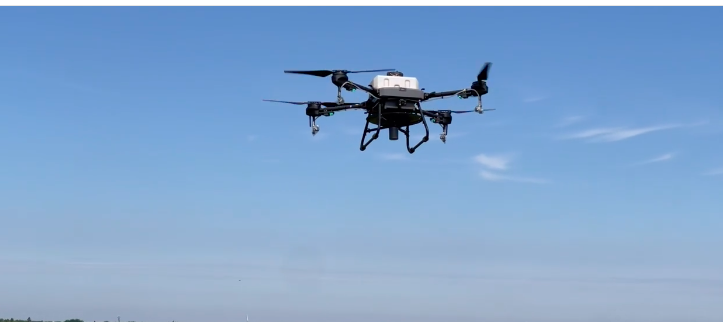By Jeremy Appel, Local Journalism Initiative Reporter
(ANNews) – On May 24, Papaschase First Nation provided a public demonstration of its new drone technology that will be used to survey sacred spaces on the band’s traditional lands and help the broader community in Edmonton.
The event occurred at the Strathcona Remote Flyers Club at the south end of Strathcona Science Provincial Park. It opened with a traditional blessing of the drones and pilots before a demonstration of four drone capabilities — mosquito spraying, heat seeking, image capture and calibration.
Papaschase has its own fleet of Transport Canada-certified drone pilots, who are trained via Papaschase Security Services.
“It gives people another opportunity to get involved in environmental monitoring and they can be involved in projects, or as required,” Papaschase Chief Calvin Bruneau told Alberta Native News. “People want training to upgrade their skill set to be employed.”
He said Papaschase was a bit behind some other nearby nations when it comes to drone operating, so Bruneau said nation administration saw this as an opportunity to get up to speed.
The non-profit Project Safe Canada, which offers drone pilot training to many First Nations, approached Papaschase about training some of its members a few years ago.
“We decided to create some projects that will open up the door for us to do more training with our people,” Bruneau said.
It’s important to “embrace technology,” which can open up many possibilities if it’s used appropriately, he added.
“If you come up with good ways of using the drone technology, I think it can be a positive thing,” said Bruneau.
The drones’ water and air sampling capabilities could prove a game changer for Papaschase as they work on various development projects down the road.
The heat seeking drone will be particularly valuable as wildfires like the one’s we’ve seen this year become more frequent, with their ability to locate where a fire has started. They’re also useful for search and rescue operations, because they allow pilots to locate body heat.
This technology has an important role to play within the context of missing and murdered Indigenous women and girls.
Bruneau highlighted the technology’s versatility.
“We want to train security people who are also environmental monitors,” he said. “They are very multifaceted.”
Federal funding from the Aquatic Habitat Restoration Fund and The Total Accumulative Effects Initiative enabled the pilots to be trained in drone mapping and water sampling.



Be the first to comment on "Papaschase drone fleet helps nation members to serve the community"